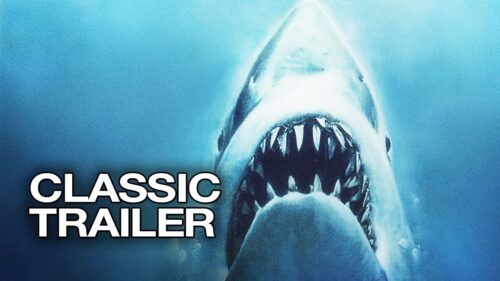Rama Krishna Sangem
Many of us still remember our theatrical experience when we watched Steven Spielberg’s English movie Jaws, close to five decades back. The movie came to Indian cinemas a few years later, but it was actually released in the US in June 1975. In more ways than one, Spielberg set the trend for later filmmakers all over the world and rewrote narration technics.
The 50th anniversary of Steven Spielberg’s Jaws is being celebrated in 2025 with various events, a new National Geographic documentary, and theatrical re-releases. Celebrations include festivals on Martha’s Vineyard, the filming location, with museum exhibits, fan events, and merchandise.
Jaws is being recognized for its monumental impact as the first summer blockbuster, its significant influence on filmmaking and popular culture, and its contribution to discussions about shark conservation.
Fifty years ago the world was changed for ever by a shark. On 20 June 1975, cinemagoers in the US were the first to experience the visceral thrills and oceanic spills of Jaws.
It’s the original blockbuster, it inspired an entire genre of “sharksploitation” entertainment, and it transformed what millions thought about sharks, for better and for worse.
In many ways, Steven Spielberg’s marine masterpiece was an accident. In 1973, the novelist Peter Benchley came up with the title Jaws just 20 minutes before his final deadline. “What does it mean?” asked his editor. “I haven’t the faintest idea,” replied Benchley, “but at least it’s short.”
Nicknamed Bruce (after Spielberg’s lawyer), the mechanical shark used in the film malfunctioned so much that it appeared in the final edit for a mere four minutes, and not fully until nearly an hour in. Instead Spielberg focused on fear and threat, and the rest is history.
Yet perhaps he did his job too well. Ross Williams, editor of The Daily Jaws website, says the film “cast a long shadow over sharks. It turned fear into frenzy, and that fear translated into decades of persecution.”
Trend setter for later movies
Jaws was a trendsetter that defined the modern summer blockbuster, a phenomenon now seen with films like Star Wars and the Marvel Cinematic Universe. The film also revolutionized movie marketing through a massive television campaign, pre-release hype, and tie-ins with the book, a strategy still influencing how films are sold. Its impact extended to audience fears, cementing the idea of sharks as terrifying monsters through its iconic music and imagery


